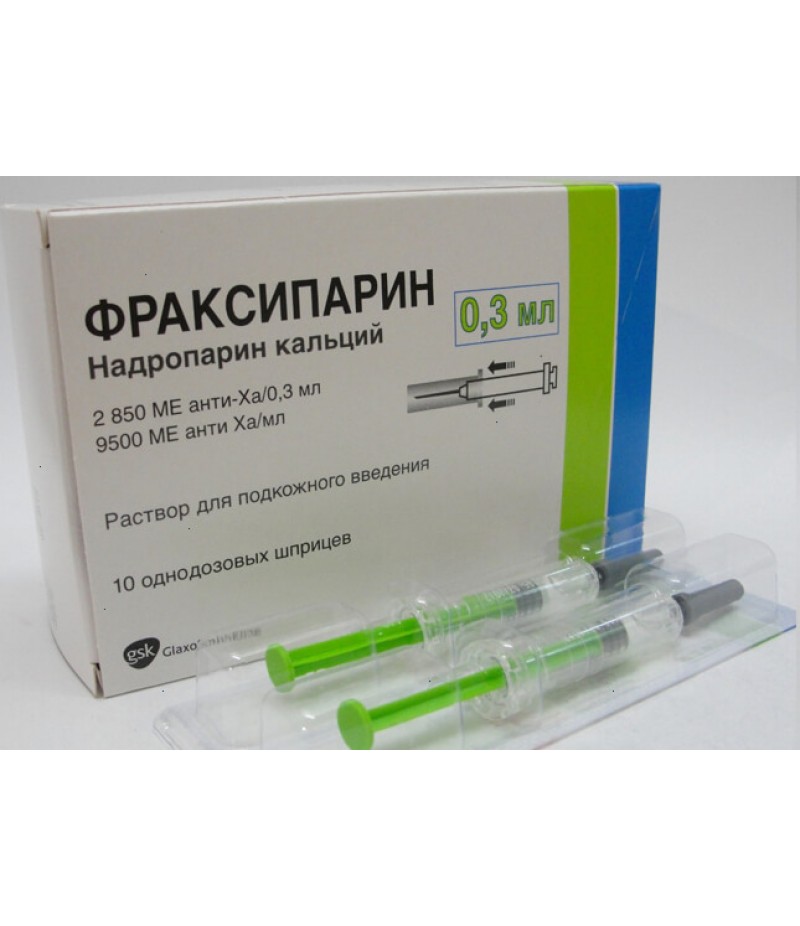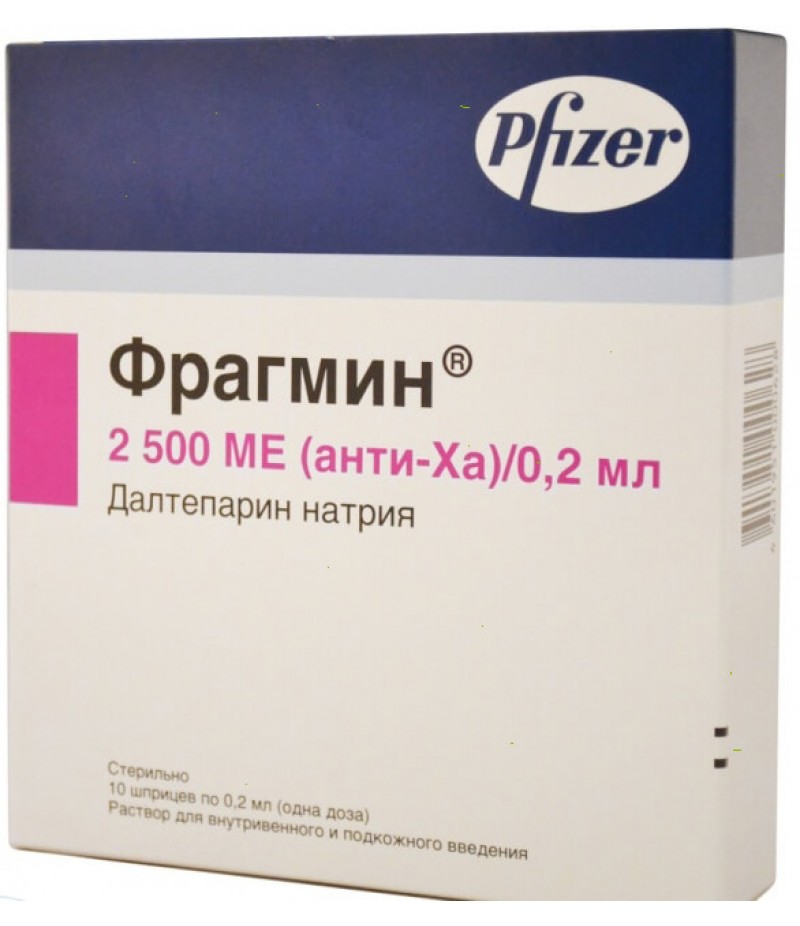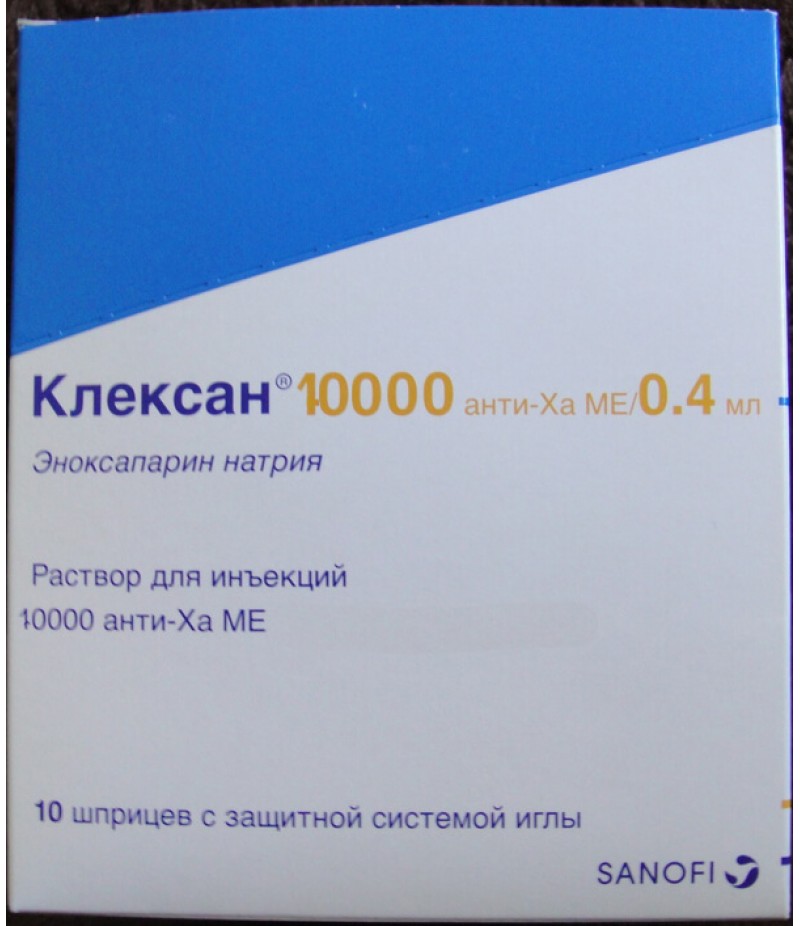Fraxiparine solution 2850ME 0.3ml #10
- $127.80
- 2 or more $127.50
- 3 or more $127.30
- Availability:In Stock
User manual for FraxiparineReed more and buy Fraxiparine onlineCompositionIn 1 syringe of the drug, Fraxiparine can contain 9500, 7600, 5700, 3800 or 2850 IU of anti-Xa supraparin calcium.Additional components: hydrochloric acid o..
Tags: solution
User manual for Fraxiparine
Reed more and buy Fraxiparine online
Composition
In 1 syringe of the drug, Fraxiparine can contain 9500, 7600, 5700, 3800 or 2850 IU of anti-Xa supraparin calcium.
Additional components: hydrochloric acid or calcium hydroxide solution, water.
Form of issue
In syringes there is a slightly opalescent, colorless, transparent solution for subcutaneous injections.
Two such disposable syringes in a blister, five or one blisters in a pack of paper.
pharmachologic effect
Anticoagulant and antithrombotic.
Pharmacodynamics and pharmacokinetics
Pharmacodynamics
Low molecular weight heparin, produced by depolymerization from standard heparin; chemically, it is a glycosoaminoglycan with an average molecular weight of 4,300 daltons.
Has high tropicity to the blood protein antithrombin 3, which leads to suppression of the factor Xa - this is mainly due to the pronounced antithrombotic effect of the supraparin.
Activates: tissue factor transformation blocker, fibrinolysis of direct release of tissue plasminogen stimulant from endothelial tissues, changes in rheological parameters of blood (decrease in blood viscosity and increase in permeability of membranes of platelet cells and granulocyte cells).
In comparison with unfractionated heparin has a weaker effect on platelet activity, on aggregation and on primary hemostasis.
During treatment treatment with maximum activity, APTT lengthening is 1.4 times greater than the standard one. In prophylactic dosages does not cause a strong decrease in APTT.
Pharmacokinetics
After subcutaneous injection, the greatest anti-Ha activity, that is, the maximum concentration in the blood is reached after 4-5 hours, almost completely absorbed (up to 88%). With intravenous injection, the greatest anti-Ha activity occurs in 10 minutes. The elimination half-life is about 2 hours. However, anti-Xa properties are manifested for a minimum of 18 hours.
Metabolised in the liver by desulfation and depolymerization.
Indications for use
Prevention of thromboembolic complications (after orthopedic and surgical operations, in people with a high risk of thrombosis, suffering from cardiac or respiratory insufficiency in acute type).
Contraindications
Bleeding or its increased risk associated with worsening of hemostasis.
Thrombocytopenia in the use of nadroparin in the past.
Lesions of organs with a risk of bleeding.
Age to 18 years.
Severe kidney failure.
Intracranial hemorrhage.
Injuries or surgeries on the spinal cord and brain or on the eyeballs.
Acute infective endocarditis.
Hypersensitivity to the components of the drug.
Precautions should be taken with: hepatic or renal insufficiency, severe arterial hypertension, peptic ulcers in the past or other diseases with an increased risk of bleeding, changes in blood circulation in the ocular vasculature and retina, after operations, in patients weighing up to 40 kg, if the duration treatment exceeds 10 days, non-observance of the recommended regimens of therapy, when combined with other anticoagulants.
Side effects
Reactions from the coagulation system: bleeding of various localizations.
Reactions from the hematopoietic system: thrombocytopenia, eosinophilia.
Reactions from the hepatobiliary system: an increase in the content of hepatic enzymes.
Reactions from the immunity system: hypersensitivity reactions.
Local reactions: the formation of a small subcutaneous hematoma in the area of injection, the appearance of solid formations that disappear after a couple of days, necrosis of the skin in the area of administration. In these cases, therapy with Fraxiparine should be discontinued.
Other reactions: hyperkalemia, priapism.
Instructions for use Fraxiparine (Method and dosage)
Instructions for use indicate that the drug should be administered subcutaneously in the prone position in the abdominal region, alternating the right and left sides of the abdomen. You can inject the drug into the thigh.
In order not to cause loss of the drug, do not try to remove the air bubbles from the syringe before injection.
Often, patients have the question "how to prick Fraxiparine?" The needle is important to insert perpendicularly into the fold of the skin, formed by the fingers of the free hand. The fold should be retained during the entire injection period. The place of introduction should not be ground.
To prevent thromboembolism in surgery, a subcutaneous dose of 0.3 ml of Fraxiparine (2850 anti-XA ME) is recommended. The drug is administered 4 hours before the operation, then - once a day. Therapy continues for at least a week or the entire period of risk of increased thrombosis before the patient goes into ambulatory care.
To prevent thromboembolism during orthopedic interventions, Fraxiparine is administered subcutaneously to 38 anti-HA IU per kilogram of body weight, this dose can be increased one and a half times on the fourth day after surgery. The first dose is administered 12 hours before the surgery, the next one - at the same time after the operation. Further, Frakssiparin is used once a day for the entire period of risk of increased thrombosis before the patient's transition to outpatient monitoring. The duration of therapy is at least 10 days.
Patients with a high risk of thrombosis (eg, resuscitated or intensive care units, with respiratory or heart failure) Fraxiparine is administered subcutaneously once a day in an amount that is calculated according to the weight of the patient: at a weight of less than 70 kg, 3800 anti-Ha IU a day, and with a mass of more than 70 kg injected 5700 anti-Ha IU per day. The drug is used throughout the period of risk of increased thrombosis.
When treating infarction without the presence of Q wave or unstable angina, the drug is administered subcutaneously every 12 hours. Duration of treatment - 6 days. The first dose is administered intravenously once by a bolus method, the following doses are administered subcutaneously. They are established based on the body weight of the patient - 86 anti-Ha IU per kilogram of weight.
When treating thromboembolism, anticoagulants in tablets should be given as soon as possible. Treatment with Fraxiparine is not stopped until the target values of prothrombin time have been reached. The drug is administered subcutaneously every 12 hours, the standard course duration is 10 days. The dose is introduced from the calculation of 86 anti-Ha IU per kilogram of weight.
Overdose
Symptoms: bleeding of various locations.
Treatment: mild bleeding does not require therapy (enough to lower the dose or postpone the subsequent injection). Sulfate protamine neutralizes the anticoagulant effect of heparin. Its use is necessary only in severe cases. It is necessary to know that 0.6 ml of protamine sulfate neutralizes approximately 950 anti-Xa ME supraparin.
Interaction
The risk of hyperkalemia is increased when combined with potassium salts, ACE inhibitors, potassium-sparing diuretics, angiotensin receptor blockers, heparins, nonsteroidal anti-inflammatory drugs, tacrolimus, cyclosporine, trimethoprim.
Joint use with acetylsalicylic acid, indirect anticoagulants, NSAIDs, fibrinolytic or dextran, enhances the effects of drugs.
Terms of sale
To buy Fraxiparine you don't need a prescription.
Storage conditions
Do not freeze.
Store at temperatures up to 30 degrees.
Keep away from children.
Shelf life - three years.
special instructions
Fraxsiparin is not allowed to be administered intramuscularly.
Does not affect the ability to drive.
Children
Age under 18 years is a contraindication for prescribing the drug.
Fraxiparine during pregnancy (and lactation)
Nadroparin calcium penetrates the placenta during pregnancy and is excreted in breast milk. Therefore, injections of Fraxiparine during pregnancy and during breastfeeding are not advised to appoint, except in extreme cases.
Fraxiparine with IVF
Assigned to improve the rheological properties of the blood, since the use of hormones causes the opposite effect, and facilitating implantation.
Reviews about Fraxiparine
Patients' responses about the drug are quite different, but they should not be relied upon if you are offered Fraxiparine treatment. Justification of the drug, its effectiveness and all the risks associated with it can be estimated only by a specialist.
There are no bad reviews about Fraxiparine during pregnancy from those who have been treated. On the health of children, as practice shows, the drug does not affect. In the recipe for Latin, the name of the remedy sounds like Fraxiparini.




